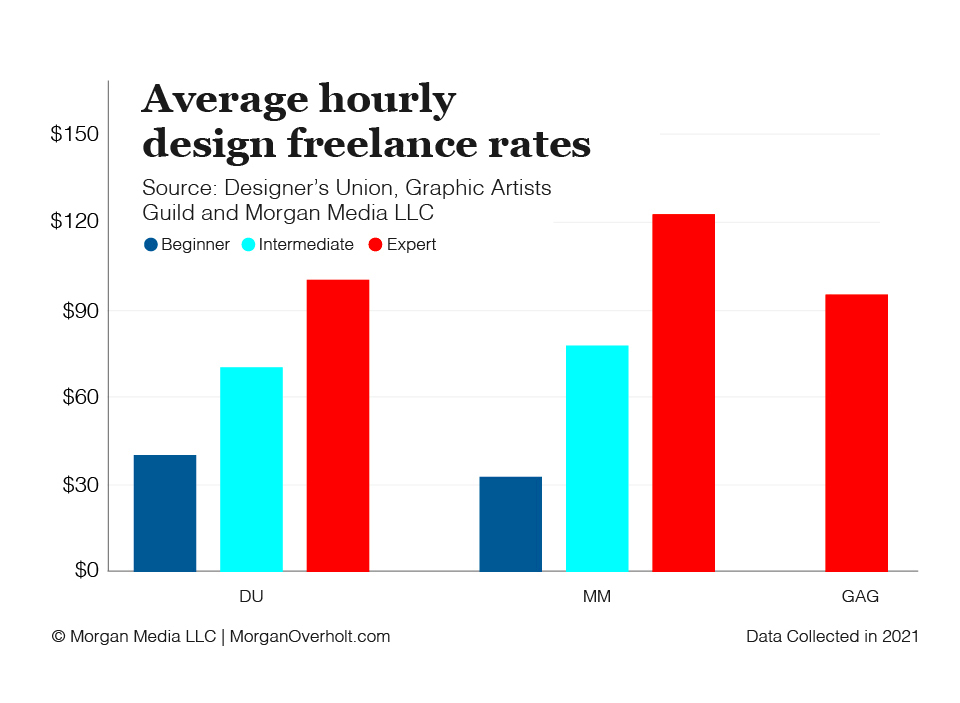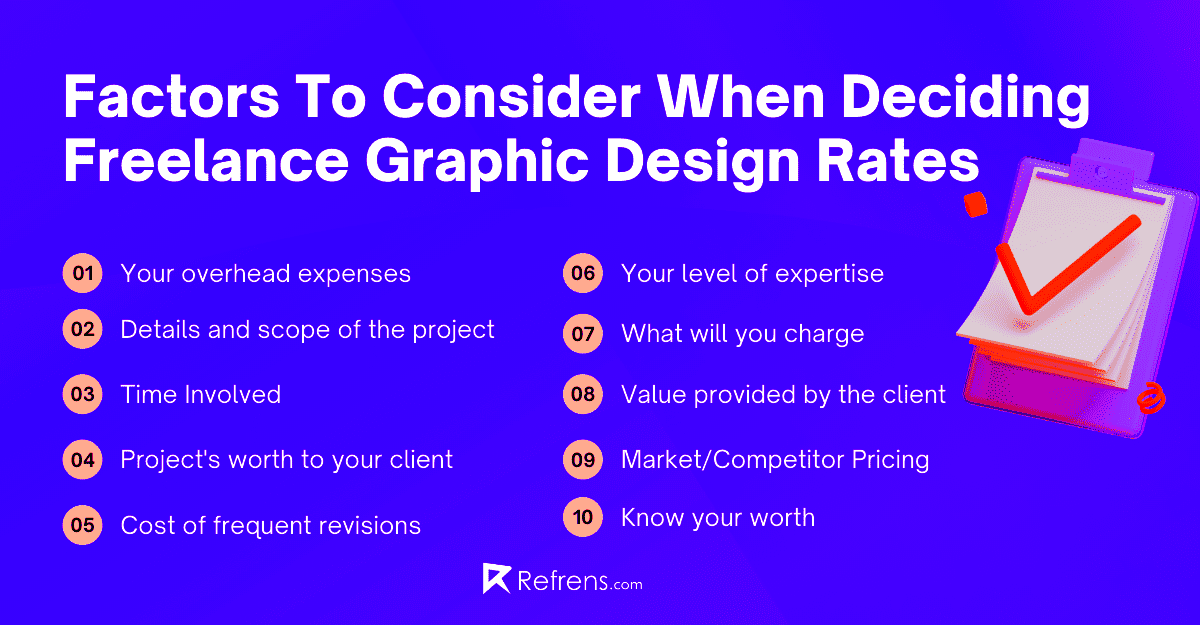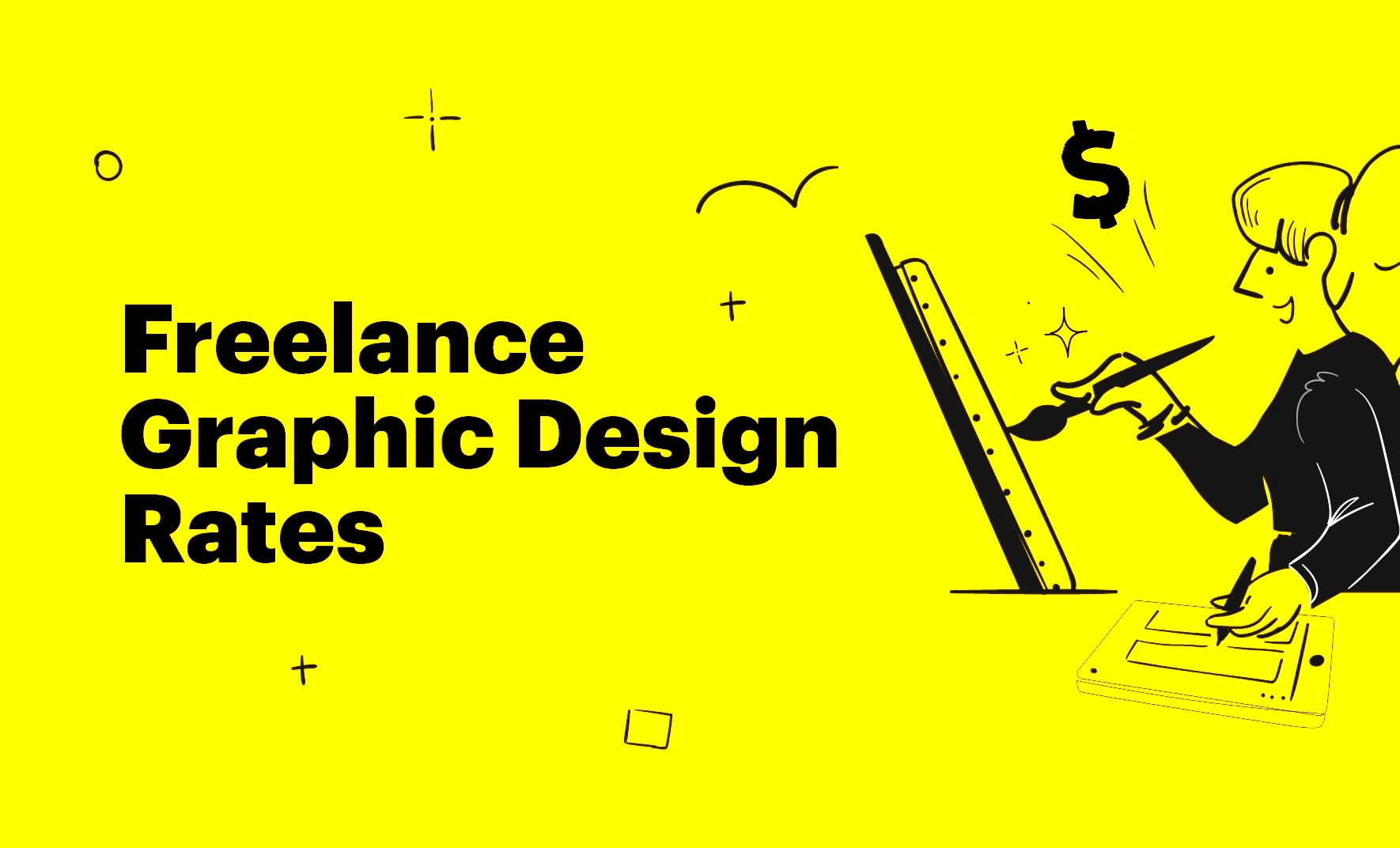In the freelance marketplace, graphic design fees are essential. This knowledge assists both designers and customers to navigate through the monetary sides of projects. By charging appropriate prices, designers demonstrate their expertise and the worth they contribute to a project. An understanding of these prices enables clients to plan appropriately with a view of obtaining quality work.
Graphic design can never be mere visuals; it includes research, imagination, and technological know-how. In light of this, here are reasons that make comprehension of these figures significant:
- Value Perception: Higher rates often indicate higher quality. Clients may perceive a designer with higher rates as more experienced and capable.
- Budgeting: Knowing the average rates allows clients to allocate funds appropriately for their projects.
- Professionalism: Transparent pricing reflects professionalism and can build trust between clients and designers.
Factors Influencing Graphic Design Rates

The pricing of graphic design services is affected by several elements hence designers need to understand them so that they can charge appropriately while clients get a grip of why they pay such amounts.
- Experience Level: More experienced designers typically charge higher rates due to their refined skills and extensive portfolios.
- Project Complexity: Complex projects require more time and expertise, leading to higher rates.
- Market Demand: Rates can fluctuate based on demand for specific services or design styles.
- Geographic Location: Designers in major cities often charge more than those in smaller towns, reflecting the local cost of living.
- Specialization: Designers with niche skills (like UX/UI design) may command higher rates due to their specialized knowledge.
Also Read This: How to Start as a Freelance Content Creator
Comparing Rates for Different Graphic Design Services

The price of graphic design varies greatly between different services. This is why it is vital to comprehend why various graphic design services have differing rates.
| Service Type | Average Rate (per hour) | Typical Project Rate |
|---|---|---|
| Logo Design | $50 - $150 | $300 - $2,500 |
| Website Design | $75 - $200 | $1,000 - $10,000 |
| Social Media Graphics | $25 - $100 | $100 - $1,500 |
| Print Design (Brochures, Flyers) | $30 - $120 | $200 - $2,000 |
| Brand Identity Packages | $100 - $300 | $500 - $5,000 |
These numbers might differ depending on different places, how long the designer has been working and also on the precise hopes of the task. Always keep it in mind that even if rates are a big concern what really matters is how good does it turn out to be or just right for you in general.
Also Read This: Best Fiverr Sellers for Logo Design in 2024
How to Set Your Graphic Design Rates
If you’re just starting out, you might feel daunted by establishing your graphic design rates. It is important to strike a balance between what you deserve and what clients are ready to pay. Your rates must reflect your skills, experience and the value that you offer for every project. Here’s how you can go about it.
To come up with your graphic design rates, follow these steps:
- Research Industry Standards: Look at what other designers in your area and specialty charge. Websites like Glassdoor and PayScale can provide valuable insights.
- Evaluate Your Skills: Consider your experience, education, and unique skills. If you have specialized training, you can justify higher rates.
- Consider Your Costs: Factor in your expenses, including software, equipment, and any overhead costs. Your rates should cover these while also allowing for profit.
- Choose a Pricing Model: Decide whether you’ll charge hourly or by project. Both have their pros and cons, so choose what fits your style.
- Test and Adjust: Start with a rate you feel comfortable with, then monitor client feedback and adjust your rates as you gain more experience.
Do not forget that determining a price for your services is a continuous procedure. As you develop your expertise and the environment around you changes, do not hesitate to go back and change them.
Also Read This: Taxation on Freelance Income
Finding Your Niche in Graphic Design
Just as important is the presence of a niche in graphic designing. When a designer finds a niche to use, it helps him/her to target clients with particular design needs. By venturing into one or two areas only, it means that the designer can concentrate on his/her skills and marketing efforts on attracting people who may need those skills.
Strategies which can be used to discover your niches are listed below:
- Reflect on Your Interests: Think about what areas of graphic design excite you the most. Do you love creating logos, designing websites, or developing marketing materials?
- Assess Your Skills: Consider your strongest skills. Are you better at illustrations, typography, or digital art? Your niche should align with what you do best.
- Research Market Demand: Investigate what services are in high demand in your area. This can help you choose a niche that not only interests you but also has clients looking for those services.
- Explore Existing Niches: Some popular niches include:
- Brand identity design
- User experience (UX) design
- Print design (brochures, business cards)
- Social media graphics
- Build Your Portfolio: Once you identify your niche, create a portfolio showcasing your best work in that area. This will help attract clients looking for specific services.
Niche-finding may take a while, but ultimately it makes one’s job more rewarding and gainful.
Also Read This: How to Cancel a Fiverr Order: A Step-by-Step Guide
Tips for Negotiating Rates with Clients
Graphical artist’s earnings can significantly be influenced by the way they negotiate their rates with customers. An essential part of this process is being confident and clear when talking to clients so that both sides can come to agreement that is just.
Certain things that would greatly assist you to attain a successful negotiation are:
- Know Your Worth: Before entering negotiations, understand your value and what you bring to the table. Be prepared to discuss your skills and experience confidently.
- Set Your Bottom Line: Determine the lowest rate you’re willing to accept before negotiating. This will help you stay firm during discussions.
- Communicate Clearly: Be upfront about your rates and what they include. Transparency builds trust and helps avoid misunderstandings later on.
- Listen to the Client: Understand their budget and needs. This will allow you to find a middle ground that works for both of you.
- Be Open to Compromise: Sometimes, clients may not have the budget for your standard rates. Consider offering different package options or adjusting your scope of work to meet their needs.
- Follow Up in Writing: After negotiations, confirm all agreed terms in writing. This helps both parties stay on the same page and reduces the risk of disputes later.
Freelancing, by its very nature, involves negotiating. After some time spent practicing you will get better at talking about prices as well as defending your own worth.
Also Read This: Is Fiverr 1099 NEC or 1040? Understanding Your Tax Obligations as a Freelancer
Where to Find Graphic Design Jobs
Exploring different paths for finding graphic design jobs can be quite thrilling because there are numerous options accessible. It's very important for starters or people who want to reach more clients to know where they can begin their search. Let us check out a few effective sites as well as tactics for getting employment in graphic designing.
The following are some of the finest references worth taking into account:
- Online Job Boards: Websites like Indeed, Glassdoor, and SimplyHired frequently list graphic design positions. You can filter by location and job type.
- Freelance Platforms: Platforms like Fiverr, Upwork, and 99designs allow you to create profiles and bid on projects. These are great for freelancers looking to build their portfolio.
- Social Media: LinkedIn, Instagram, and Facebook groups dedicated to design often share job postings. Following industry leaders can also lead to opportunities.
- Networking: Attend industry events, workshops, and meetups. Connecting with other designers can lead to referrals and collaborations.
- Creative Agencies: Research local design agencies that might need freelancers or full-time designers. Reach out directly with your portfolio.
- Cold Pitching: Identify companies you admire and reach out with a tailored pitch. Express how your design skills can benefit them.
Always keep in mind that searching for employment opportunities involves sheer quantity. In order to come across an ideal job offer, one needs to send applications everywhere and interact with more people.
Also Read This: How to Make Money Writing Articles on Fiverr
Frequently Asked Questions
As a professional in graphic design, there are numerous queries that come up regarding this trade, pricing and job opportunities among others. So let’s look into some common questions to get you started with your career journey in graphic design.
- What should I include in my portfolio?
Your portfolio should showcase a variety of your best work. Include different types of projects, your design process, and any testimonials from clients. - How do I determine my rates?
Consider your experience, the complexity of the work, and industry standards. It’s important to price your work competitively but also ensure you’re earning what you deserve. - How can I improve my design skills?
Continuous learning is key. Take online courses, attend workshops, and seek feedback from other designers to keep improving. - What’s the best way to network?
Attend design events, join online forums, and actively participate in social media groups. Building genuine relationships can open doors. - How do I handle client revisions?
Set clear guidelines for revisions upfront. Discuss how many revisions are included in the initial price and what will incur additional fees.
If you have more questions, don’t hesitate to ask fellow designers or look for online resources. The design community is often very supportive!
Conclusion
To sum it up, graphic design is a lively industry that is full of prospects for people ready to work hard. Having knowledge on how to set your prices, find your area of specialization and search for job openings is vital in making a desired profession. Always bear in mind that every move you make adds to your professional development as an illustrator.
Be up to date regarding trends in your profession, always improving oneself and reaching out to others for help. As a result of hard work and love for what one is doing, it is possible to survive in a tough competition like graphic design world. Always continue creating, learning and adapting regardless if you are self-employed or employed. You are like nobody else!




